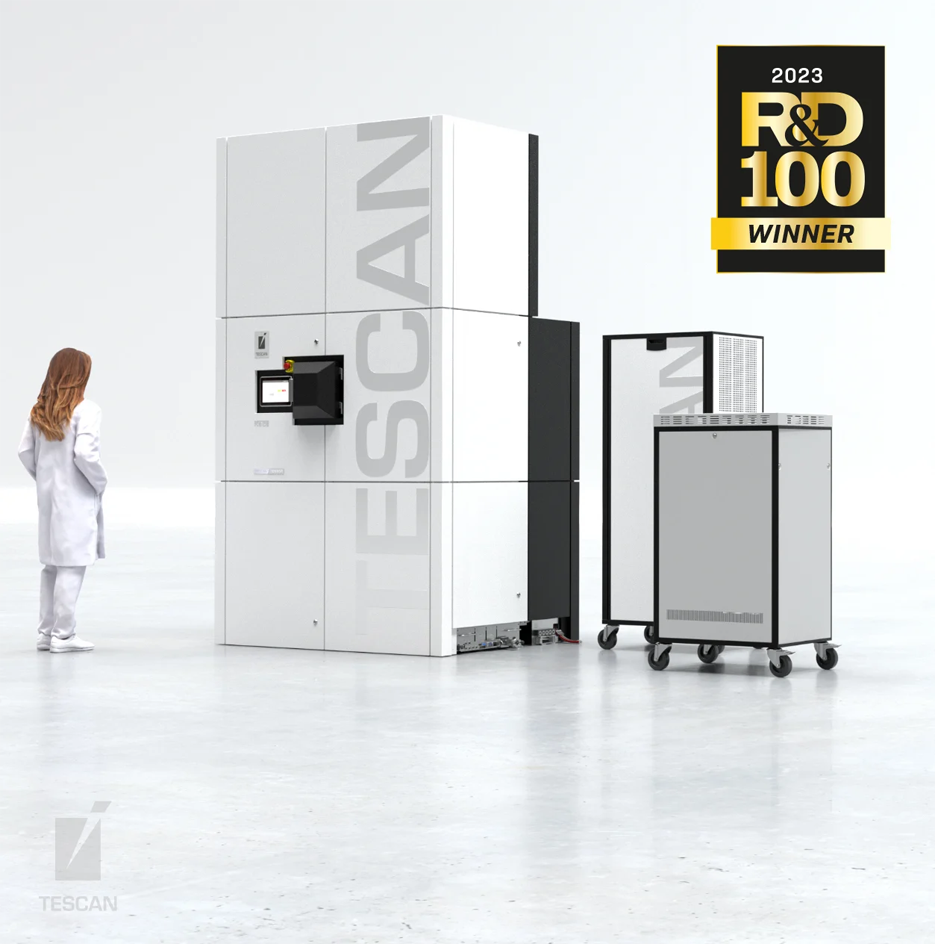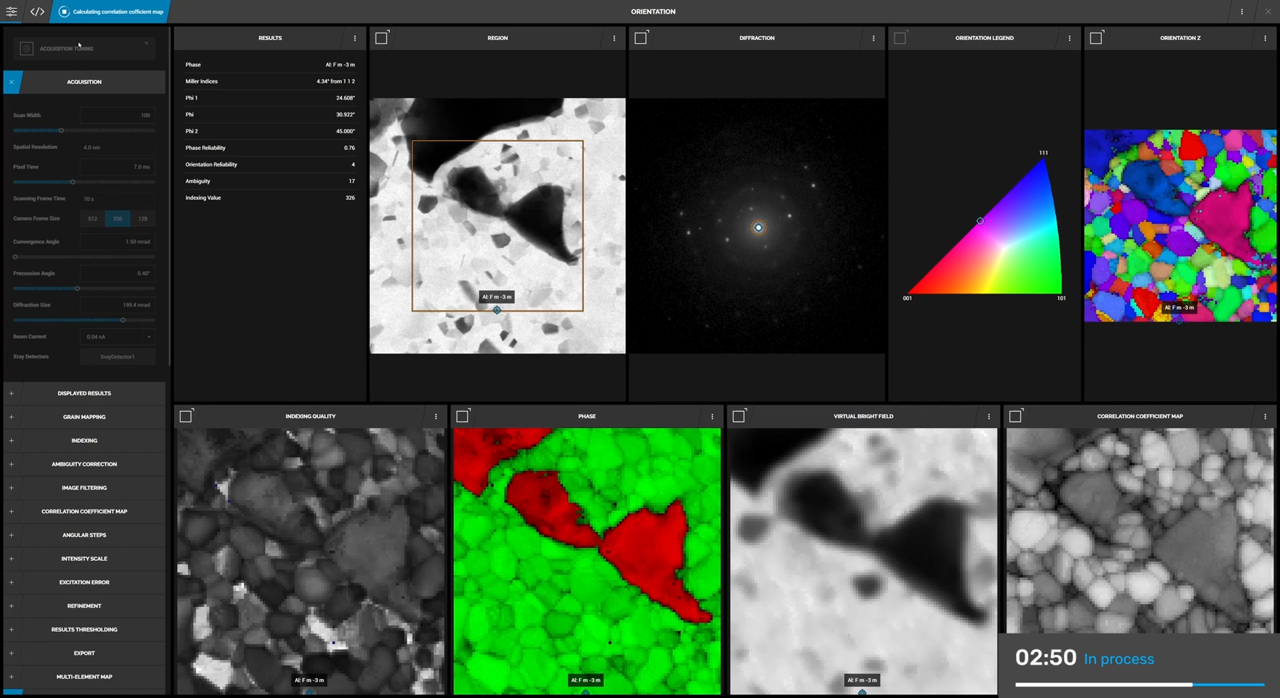TESCAN TENSOR
STEM WELL DONE
The first near-UHV 4D-STEM that is integrated, precession-assisted, and analytical

TESCAN TENSOR is the first 4D-STEM
dedicated of the world
for multimodal characterization of nanoscale morphological, chemical, and structural properties of functional materials, thin films, and synthetic particles, with outstanding 4D-STEM performance and unprecedented usability.
- Scan synchronization with diffraction images, EDS acquisition and beam blanking.
- Integrated, near real-time 4D-STEM data analysis and processing
- Performance benefits of electron beam precession and near-UHV
- A novel approach to the STEM user experience
4D-STEM analytical
The full picture of the electron beam interaction - shows
4D-STEM is the microscopy method of choice for true nanoscale multimodal characterization of material properties such as morphology, chemistry, and structure. On each pixel of the STEM data set, TESCAN TENSOR acquires a diffraction pattern and an EDS spectrum, quickly and perfectly timed. Together, the diffraction and spectroscopy data encapsulate the complete picture of the interaction between the electron beam and the sample, from which a wide range of material properties can be derived.


Near real-time analysis and processing of 4D-STEM data
A truly unique feature of TESCAN TENSOR is Explore, TENSOR's integrated platform for real-time processing and analysis of large-scale scanning electron diffraction data sets.
Explore offers 4D-STEM measurements to material scientists, semiconductor and failure analysis researchers, and crystallographers, without requiring expert knowledge of STEM optics or 4D-STEM data analysis and post-processing.
Advanced users have the ability to adjust the preset optimized optical properties for each STEM or 4D-STEM measurement to their preference. In addition, the 4D-STEM data acquired with the Virtual STEM measurement is compatible with open source computational platforms such as HyperSpy, LiberTEM, or Py4DSTEM, available for advanced users to develop their own 4D-STEM measurements.

Differentiated 4D-STEM performance
The performance of TESCAN TENSOR's 4D-STEM capabilities is supported by ultra-fast and accurate scanning synchronization with (direct electron) diffraction imaging, EDS acquisition, electron beam precession, beam blanking, and real-time analysis and processing. of the acquired data.
This has been possible by integrating state-of-the-art components and techniques "from scratch":
- Hybrid pixel, Direct Electron Detection (DED) Near-ultrahigh vacuum within sample area (near UHV) Precessing Electron Diffraction (PED) Integrated, fast beam blanking Windowless, symmetrical, solid wide-angle EDS 4D analysis and processing -STEM in real time (Explore)

TESCAN TENSOR: A STEM as easy to use as a SEM
Scientists, engineers, technicians, and students have long wanted a TEM solution that is easily usable without weeks or months of training in non-productive electro-optical alignments and adjustments. TESCAN TENSOR allows you to spend your time at the microscope interacting with your sample, rather than with the optics. This is accomplished by implementing “measurements” with preset optical properties, such as beam current, convergence angle, spot size, and precession on or off, automatically adjusted and aligned.
The result: an analytical 4D-STEM that is as easy to use as TESCAN SEMs, with all the efficiency and economic benefits of a results-based electron microscope.
This approach can also generate economic benefits, such as better accessibility for novice users, leading to increased tool utilization and supporting return on investment.



